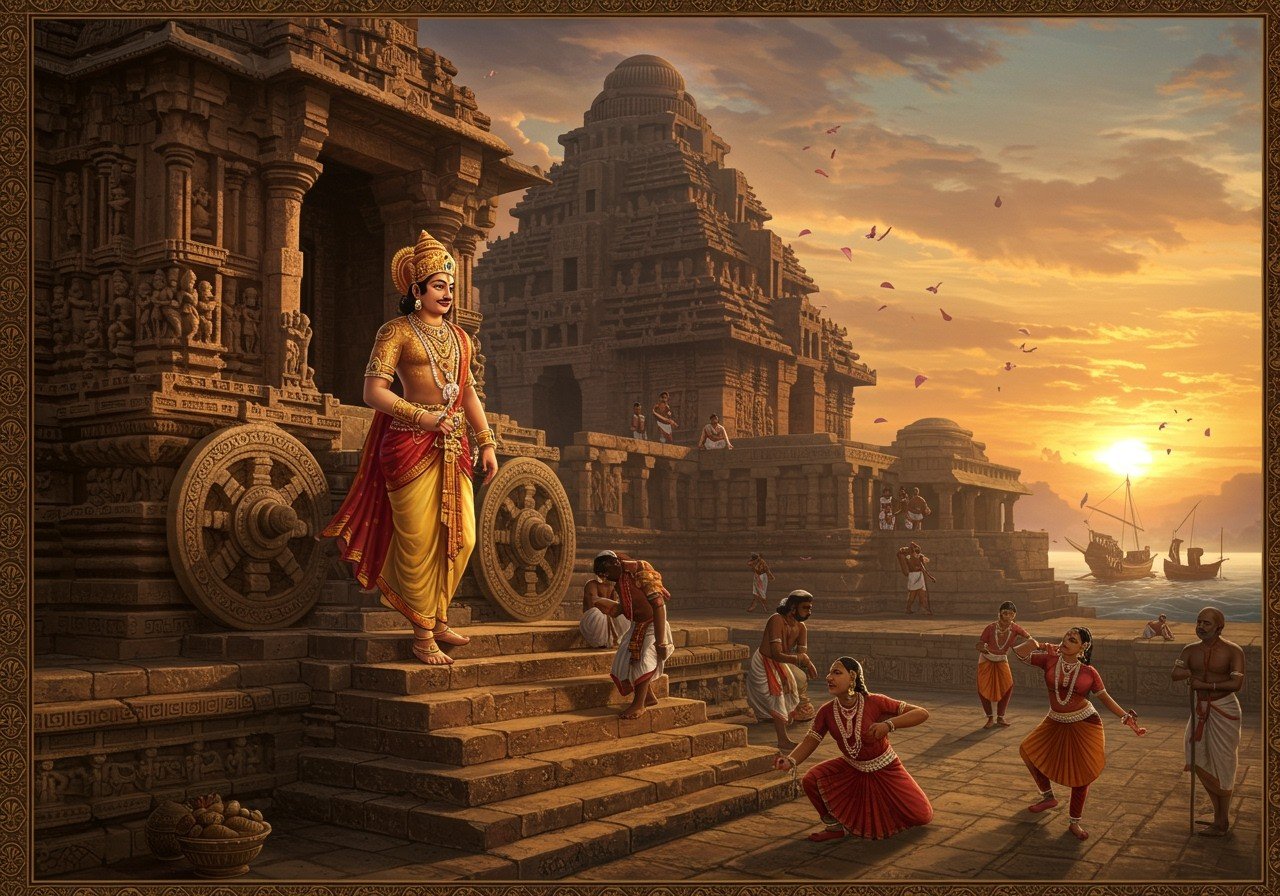
The Eastern Ganga Dynasty, also known as the Purba Gangas, Rudhi Gangas, or Prachya Gangas, holds a prominent place in the annals of Odisha’s history. This medieval Hindu dynasty, ruling Kalinga from the 5th century to the mid-15th century, left an indelible mark on much of modern-day Odisha, along with significant impacts on Tamil Nadu, Karnataka, Kerala, and Andhra Pradesh. Their reign, spanning three distinct phases—Early Eastern Gangas (493-1077), Imperial Eastern Gangas (1028-1434), and later periods—witnessed remarkable achievements in art, architecture, religion, and culture. Exploring their story unveils a rich tapestry of heritage and offers valuable insights into the complexities of Eastern India’s past.
The Rise of the Eastern Ganga Dynasty
Foundation and Early Years
The Eastern Ganga dynasty’s journey began with the migration of rulers from Karnataka to Odisha. Indravarman I, issuing the Jirjingi copperplate grant in 537 CE, stands as the first historically verified ruler. Later, Anantavarman Chodaganga (1078-1150 CE) solidified the dynasty’s power and is renowned for commissioning the magnificent Jagannath Temple in Puri, a testament to their devotion and architectural prowess. This iconic temple remains a spiritual and cultural centerpiece of Odisha to this day. You can find exquisite puja items and divine idols, reminiscent of those used during the Ganga Dynasty, at Poojn.in.
Expansion and Consolidation
Through strategic military campaigns and shrewd alliances, the dynasty expanded its territorial control. These endeavors not only consolidated their power but also ushered in a period of administrative reforms, leading to improved governance and efficient management. This era of stability and prosperity laid the foundation for the dynasty’s cultural and economic growth.
Cultural Flourishing
The Eastern Ganga period witnessed a vibrant cultural renaissance. Art, literature, and architecture flourished under their patronage, with magnificent temples being constructed and scholars receiving royal support. The dynasty’s strong emphasis on Hinduism, particularly Vaishnavism, shaped the religious landscape of the region. Odisha’s sacred sites offer a glimpse into this rich spiritual heritage.
Economic Growth
The Eastern Gangas oversaw a period of economic prosperity driven by flourishing trade, robust agriculture, and prudent resource management. Their efficient administration ensured the smooth functioning of economic activities, contributing to overall growth and stability. The dynasty’s focus on economic development further strengthened their position and influence in the region.
Eastern Ganga Dynasty vs Delhi Sultanate
Initial Conflicts
The expansionist ambitions of the Delhi Sultanate inevitably led to clashes with the Eastern Ganga Dynasty. Initial skirmishes were frequent as both powers vied for territorial control. These early conflicts set the stage for a complex and often volatile relationship between the two entities.
Military Strategies
Both the Eastern Ganga rulers and the Delhi Sultanate employed diverse military strategies in their struggle for dominance. Notable battles, such as the Battle of Katasin in 1230 CE, significantly impacted the trajectory of both powers. These military engagements shaped the political landscape and influenced the balance of power in the region.
Diplomatic Maneuvers
Alongside military confrontations, diplomatic efforts played a crucial role. Both sides engaged in strategic alliances and political maneuvering to counter each other’s influence. These diplomatic initiatives were instrumental in maintaining territorial integrity and fostering cultural exchange, despite the ongoing conflicts. Explore more about the Yameshwar temples in India.
The Decline of the Eastern Ganga Dynasty
Rise of Neighboring Powers
The emergence of powerful neighboring kingdoms, such as the Vijayanagara Empire and the Bahmani Sultanate, posed a significant threat to the Eastern Ganga Dynasty. These rising powers exerted pressure on the dynasty’s borders and challenged their dominance in the region.
Internal Struggles
Internal political strife and succession disputes weakened the dynasty from within. These internal conflicts diverted resources and attention away from external threats, making them more vulnerable to outside pressures. The resulting instability further contributed to their decline.
Feroz Shah Tughlaq’s Invasion
The invasion by Feroz Shah Tughlaq in 1360 CE dealt a severe blow to the Eastern Ganga Dynasty. Despite their resistance, this invasion marked a turning point in their fortunes. Weakened by internal strife and facing external pressure, the dynasty eventually succumbed to the Gajapati king Kapilendra Deva in the mid-15th century.
Conclusion
The Eastern Ganga Dynasty’s reign represents a significant chapter in Odisha’s history. Their contributions to architecture, religion, and culture continue to resonate today. Their legacy is visible in magnificent structures like the Jagannath Temple, a testament to their architectural prowess and spiritual devotion. Find authentic puja items for your spiritual practices at Poojn.in. Understanding their story provides valuable insights into the rich cultural heritage and historical complexities of Eastern India.
Poojn.in stands out as a premier destination for spiritual and cultural goods, offering a diverse selection of high-quality products. Whether you seek divine idols, puja accessories, or sacred jewelry, our collection caters to a wide range of devotional needs. Experience the rich tradition of Hindu worship with authentic items carefully curated to enhance your spiritual practices. Explore our extensive offerings at Poojn.in and discover the perfect items to enrich your connection with the divine.


